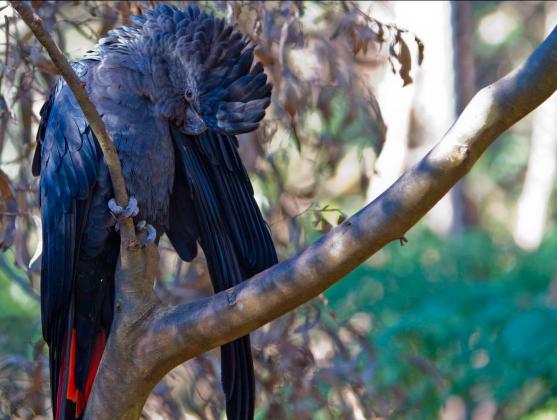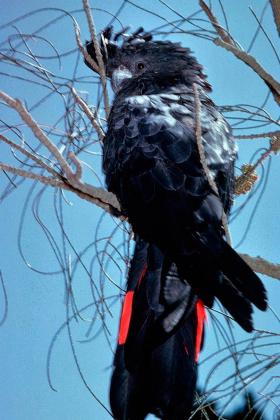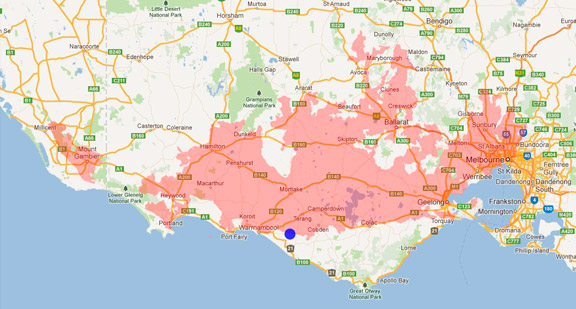A range of teacher professional learning programs will be developed to accompany the Biodiversity of the Western Volcanic Plains online outreach...


Red-tailed Black Cockatoo (south-eastern)
Calyptorhynchus banksii graptogyne
Breeding season from October to May. One egg is laid in the hollow of old trees, mainly eucalypts in or at the edges of Brown Stringybark woodland. Both adults are involved in feeding the young. Can live up to 20 years in the wild.
| Details | Description |
| Type | Bird |
| Group | Cockatoo |
| Other Common Names | Red-tailed Cockatoo |
| Identifying Characteristics | |
| Distinctive Markings | Scarlet panels in tail. |
| Diet | Herbivore. Forages for seeds mainly in fruiting Brown Stringybark and occasionally in thickets dominated by Casuarinas, Banksias, Hakeas and Acacias. Seldom feed on the ground. |
| Habitat | Generally restricted to Brown Stringybark forests or woodlands with peripheral stands of River Red Gum, Yellow Gum or Buloke. |
| Native Status | Native to Australia |
| Sounds | High pitched, guttural "creee, creee". |
| Taxonomy | |
| Phylum | Chordata |
| Class | Aves |
| Order | Psittaciformes |
| Family | Cacatuidae |
| Genus | Calyptorhynchus |
| Species | banksii graptogyne |

Distribution maps indicate current and historic locations where species have been sighted.
Source: Atlas of Living Australia
| Conservation Status | |
| DEPI Advisory List | Endangered |
| FFG Act | Listed as threatened |
| EPBC Act | Endangered |
| FFG Action Statement |
The conservation status of species is listed within Victoria and Australia.
The Department of Environment and Primary Industry (DEPI) Advisory List consists of non-statutory advisory lists of rare or threatened flora and fauna within Victoria.
The Flora and Fauna Guarantee Act 1988 (FFG Act) lists threatened species in Victoria. Under the Act, an Action Statement is produced for each listed species.
The Environment Protection and Biodiversity Conservation Act 1999 (EPBC Act) is the Australian Government’s key piece of environmental legislation, listing nationally threatened native species and ecological communities.



